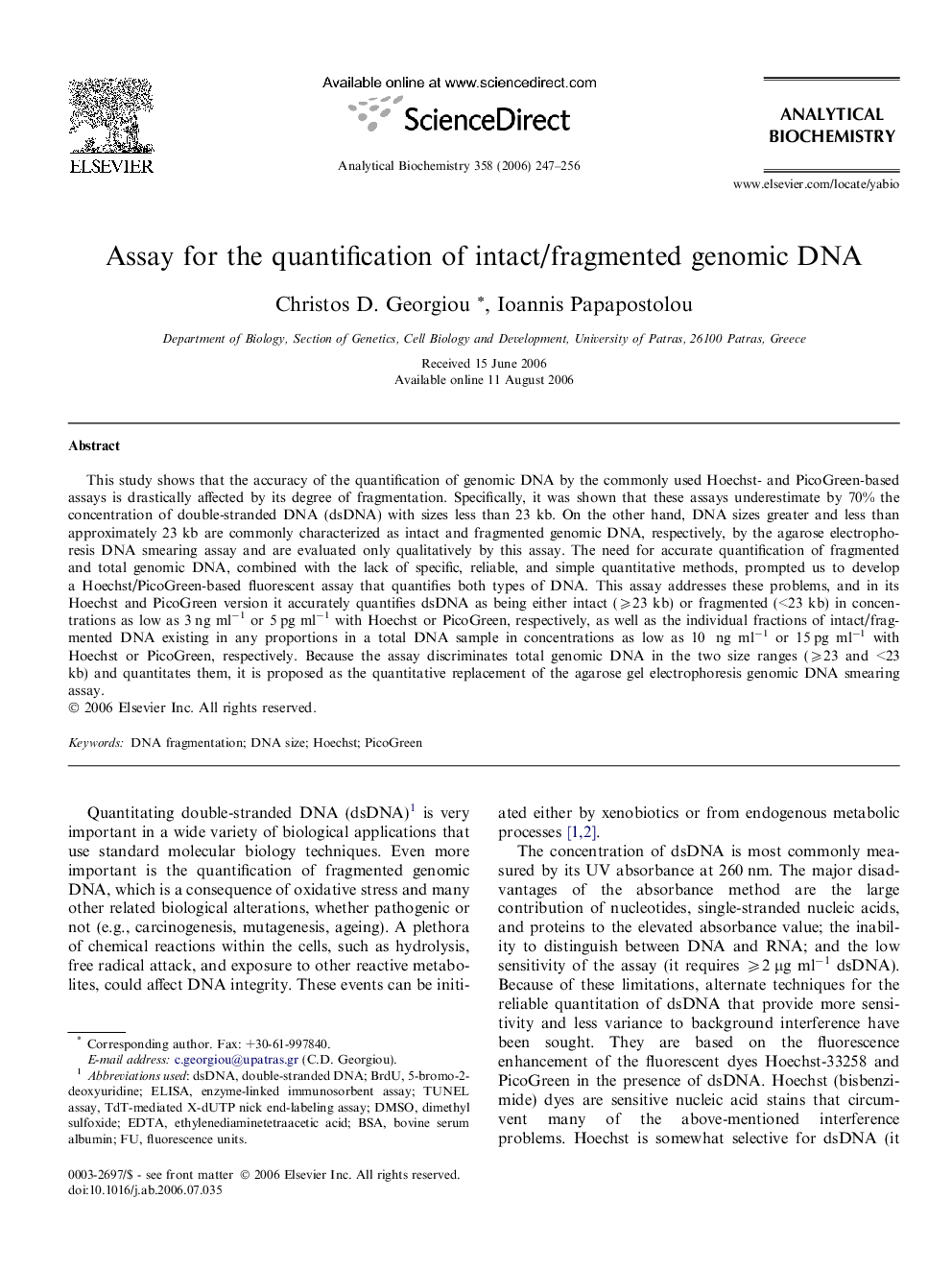| Article ID | Journal | Published Year | Pages | File Type |
|---|---|---|---|---|
| 1176760 | Analytical Biochemistry | 2006 | 10 Pages |
This study shows that the accuracy of the quantification of genomic DNA by the commonly used Hoechst- and PicoGreen-based assays is drastically affected by its degree of fragmentation. Specifically, it was shown that these assays underestimate by 70% the concentration of double-stranded DNA (dsDNA) with sizes less than 23 kb. On the other hand, DNA sizes greater and less than approximately 23 kb are commonly characterized as intact and fragmented genomic DNA, respectively, by the agarose electrophoresis DNA smearing assay and are evaluated only qualitatively by this assay. The need for accurate quantification of fragmented and total genomic DNA, combined with the lack of specific, reliable, and simple quantitative methods, prompted us to develop a Hoechst/PicoGreen-based fluorescent assay that quantifies both types of DNA. This assay addresses these problems, and in its Hoechst and PicoGreen version it accurately quantifies dsDNA as being either intact (⩾23 kb) or fragmented (<23 kb) in concentrations as low as 3 ng ml−1 or 5 pg ml−1 with Hoechst or PicoGreen, respectively, as well as the individual fractions of intact/fragmented DNA existing in any proportions in a total DNA sample in concentrations as low as 10 ng ml−1 or 15 pg ml−1 with Hoechst or PicoGreen, respectively. Because the assay discriminates total genomic DNA in the two size ranges (⩾23 and <23 kb) and quantitates them, it is proposed as the quantitative replacement of the agarose gel electrophoresis genomic DNA smearing assay.
